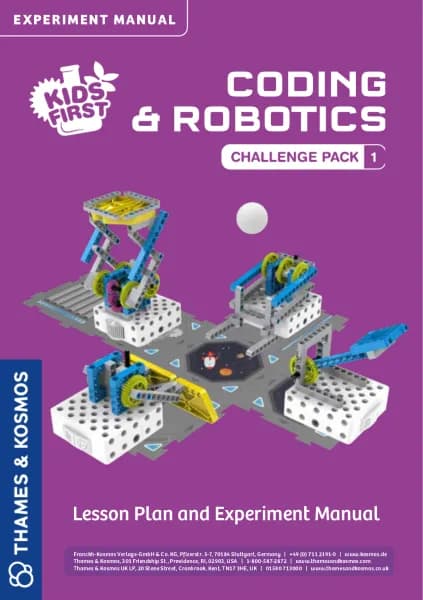Thames & Kosmos Candy Chemistry handleiding
Handleiding
Je bekijkt pagina 11 van 52

Common Cooking Conversions
In cooking as in science, you use a ton of measurements. But sometimes the units are a
bit different. In the United States, we usually use United State Customary Units for
cooking measurements. Scientists around the world however have agreed to use the
International System of Units (also called the metric system) so that everyone can
communicate data more easily. This table helps you convert between the two systems.
When you know this: Multiply by this: To get the metric equivalent:
cups 236.6 milliliters (ml)
cups 0.236 liters (l)
teaspoons 4.93 milliliters (ml)
tablespoons 14.79 milliliters (ml)
quarts 0.946 liters (l)
gallons 3.785 liters (l)
fluid ounces 29.57 milliliters (ml)
ounces (mass) 28.35 grams (g)
Fahrenheit (°F)
subtract 32, multiply by 5,
and divide by 9
Celsius (°C)
Other Helpful
Conversions
1 gallon = 4 quarts =
8 pints = 16 cups =
128 fluid ounces
1 cup =
8 fluid ounces =
16 tablespoons =
48 teaspoons
CALORIES MEASURE HEAT
Scientists measure heat in units called calories. You might be thinking
to yourself that this term sounds familiar and that you have heard it
when people talk about food. And you are right! Food calories and the
calories scientists use to measure heat are related, but not exactly
equal. A food calorie (or large calorie, or kilocalorie) is equal to 1,000
times a scientific calorie (or small calorie). Often food calories are
called kcals or Calories with a capital C. A scientific calorie is a
measure of the heat energy needed to increase the temperature of 1
gram of water by 1 °C. Scientists also use joules to measure heat
energy. One calorie equals 4.18 joules.
A single chocolate chip has about 2 to 3 calories. A cup of chocolate
chips has 800 to 1200 calories. Scientists can burn a food sample in a
special device called a calorimeter to measure how much heat energy
it gives off. The calorie counts that you see printed on the sides of
packaged foods are often obtained simply by calculating the amount
of fat, protein, and carbohydrates in the food and multiplying by
average caloric values for those three categories of food.
CHECK IT OUT
Physical Science and Cooking | 9
Bekijk gratis de handleiding van Thames & Kosmos Candy Chemistry, stel vragen en lees de antwoorden op veelvoorkomende problemen, of gebruik onze assistent om sneller informatie in de handleiding te vinden of uitleg te krijgen over specifieke functies.
Productinformatie
| Merk | Thames & Kosmos |
| Model | Candy Chemistry |
| Categorie | Niet gecategoriseerd |
| Taal | Nederlands |
| Grootte | 30778 MB |







